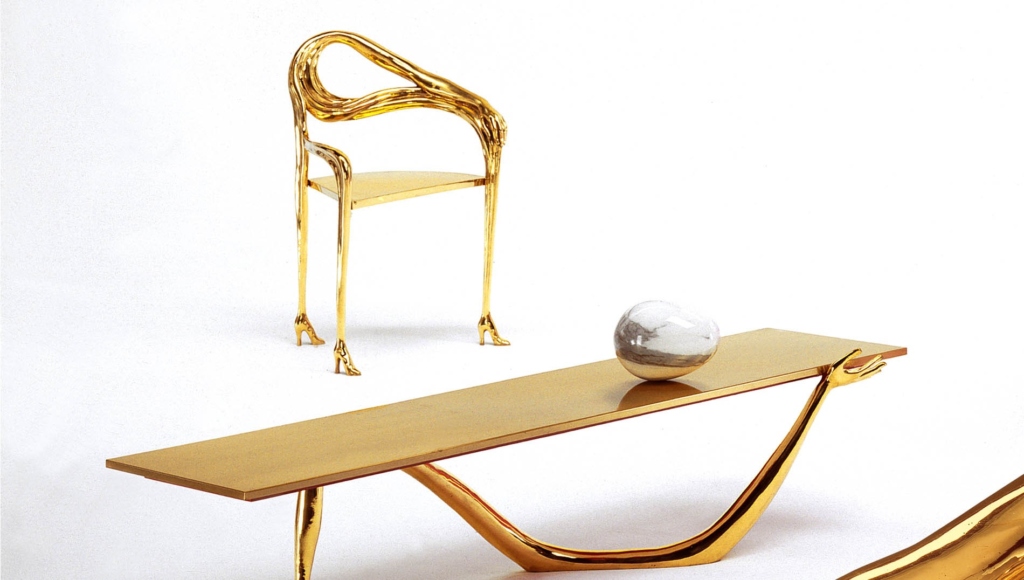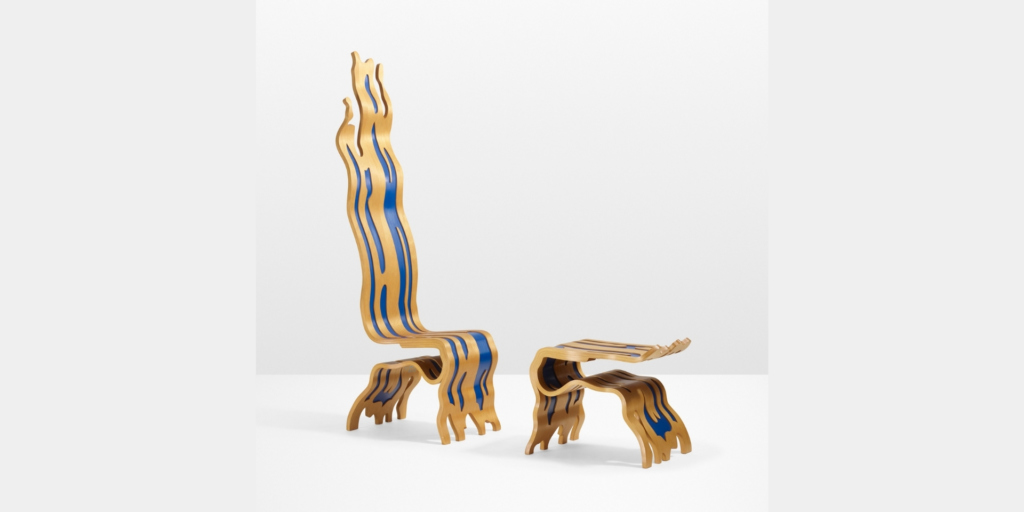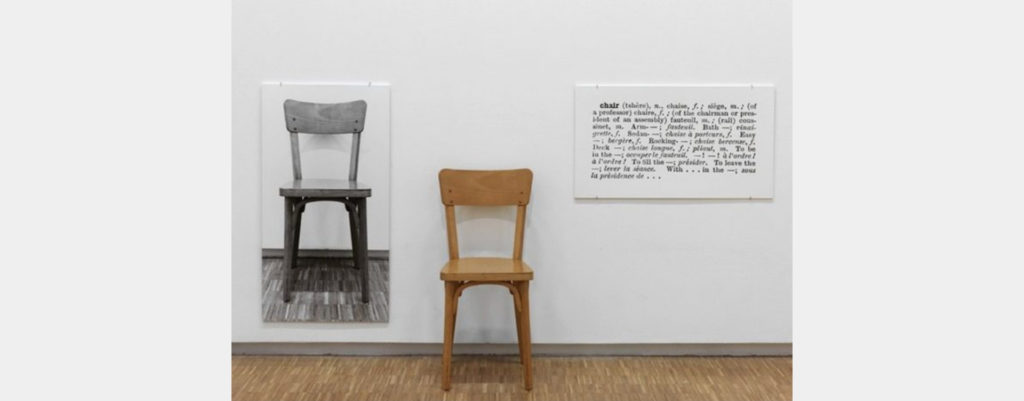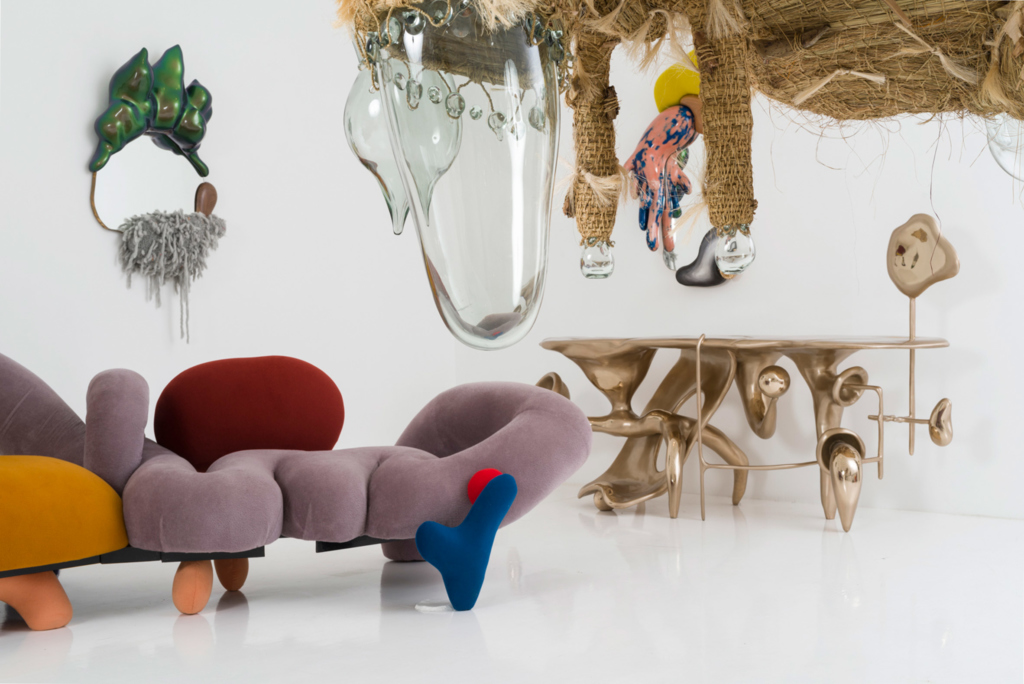Design + Art, the perfect match!
The connection between design and art is an unquestionable classic. Sometimes they are rivals and sometimes they feel attraction to each other. Indifference is not an option, no matter how hard they try to mask it. The best and most beautiful results certainly arise when the attraction is generated by admiration and love. That is when the perfect match between design and art happens.
When De Stijl meets Design
Piet Mondrian and Gerrit Rietveld

Rietveld’s chair was published in the magazine “De Stijl” in 1919 which allowed its author to join the movement. There he met the creators of the avant-garde magazine, Theo Van Doesburgmpainter and Piet Mondrian (1872-1944), whose style of using primary colors had an immediate impact on his work. In 1923, Rietveld painted the “spatial creation”, which became the Red Blue chair. He sees this chair as a three-dimensional vision of Mondrian’s work and as a sculpture in space, rather than a piece of furniture.
Rietveld believed that there was a greater goal for the furniture designer than just physical comfort: the well-being and comfort of the spirit. Rietveld and his de Stijl colleagues—including the movement’s most famous theorist and practitioner, Piet Mondrian—sought to create a utopia based on a harmonic human-made order, which they believed could renew Europe after the devastating turmoil of World War I.
The relationship between Design and Surrealism
The pioneering couple, Oscar Tusquets & Dalí

Oscar Tusquets, led a team in the 1990s to materialize many of Dalí’s furniture sketches. Some of their principal collaborations will also be highlighted, such as the Mae West room, the posthumous edition of impossible furniture imagined by Dalí or the staging designed by the architect for the exhibition on the painter at the Centre Pompidou. These pieces were considered by the artist as “sculptures with use”. As he himself stated: “a chair can cover many uses, even if not necessarily that of being seated”.
United by a common admiration, Roberto Matta & Gavina

Chair “Magritta” designed by Sebastian Matta (1911-2002) and produced by the Studio Simon Gavina, founded by Dino Gavina for the Ultramobile series in 1971. Roberto Matta designed this chair as a tribute to his friend and fellow surrealist painter René Magritte. The name MAgriTTA is a combination of the names Magritte and Matta. The apple and the black bowler hat are two of Magritte’s trademarks, derived from his famous 1946 self-portrait “The Son of Man”.
This Painting features a man in a bowler hat and dark suit with the face largely obscured by a green apple. ”Everything we see hides another thing. It is something that happens constantly. A sort of conflict between the visible that is hidden and the visible that is present.”
Loving Abstract Expressionism
Loving Mark Rothko

This current prototype of Rothko chair has an structure inspired on the Rothko’s chair that he loved to use in his studio. The client for whom this prototype was made for is a lover of the work of artist like Mark Rothko, Kazimir Malevich and furnitures from the Bauhaus period. This is the reason why the colors of the cushions are the ones used by the painter on his paintings at the the Bauhaus period.
In love with a concept
Op Art and the concept of the illusion-inspired

Inspired by the Op art, or optical art, which exploit the fallibility of the eye through illusions or optical games. “There are no actual physical cubes in Imeüble,” says Bjørn Blikstad, who works in Norway. “Only those from the optical illusion.” Playing with depth and dimensionality, the spatial relationships of objects placed within are thrown into question. Blikstad hopes that over time they will form a “simple mind map.”
When Art and Design pop together
Roy Lichtenstein pops into design

Lichtenstein’s first groundbreaking Brushstroke paintings were created in the late sixties. Yet he continued to explore the motif in drawings and prints, three dimensional renderings and sculpture, until the nineties. This took him to take this simplified reductive statement one step further. He designed a furniture piece, The Brushstroke Chair and Ottoman, in this iconic expression from which the viewer would move from a passive role to an integrated one by literally sitting within the brushstroke. Lichtenstein selected the master craftsmen of Graphicstudio at the University of South Florida to realize his vision of this functional design of art piece.
When Art meets Design
Joseph Kosuth, art and design united under by a concept

“One and three chairs” by Joseph Kosuth: This work consists of a chair, a life-size photograph of it and a dictionary definition of the word “chair”. The purpose of the work is to encourage viewers to ask themselves: what makes the “chair”, is it the object, the definition or the photograph, or is it all three? Kosuth also refers to how language is constructed and how words are given meaning by being applied to objects.
Love always wins
Misha Kahn, makes art functional and turns design into art

Just take a look at his work, in which art and design come together, to form something new, different, fun and unique. It’s a trend that is happily followed by new artists and/or designers who are at the same time artists but also designers.


